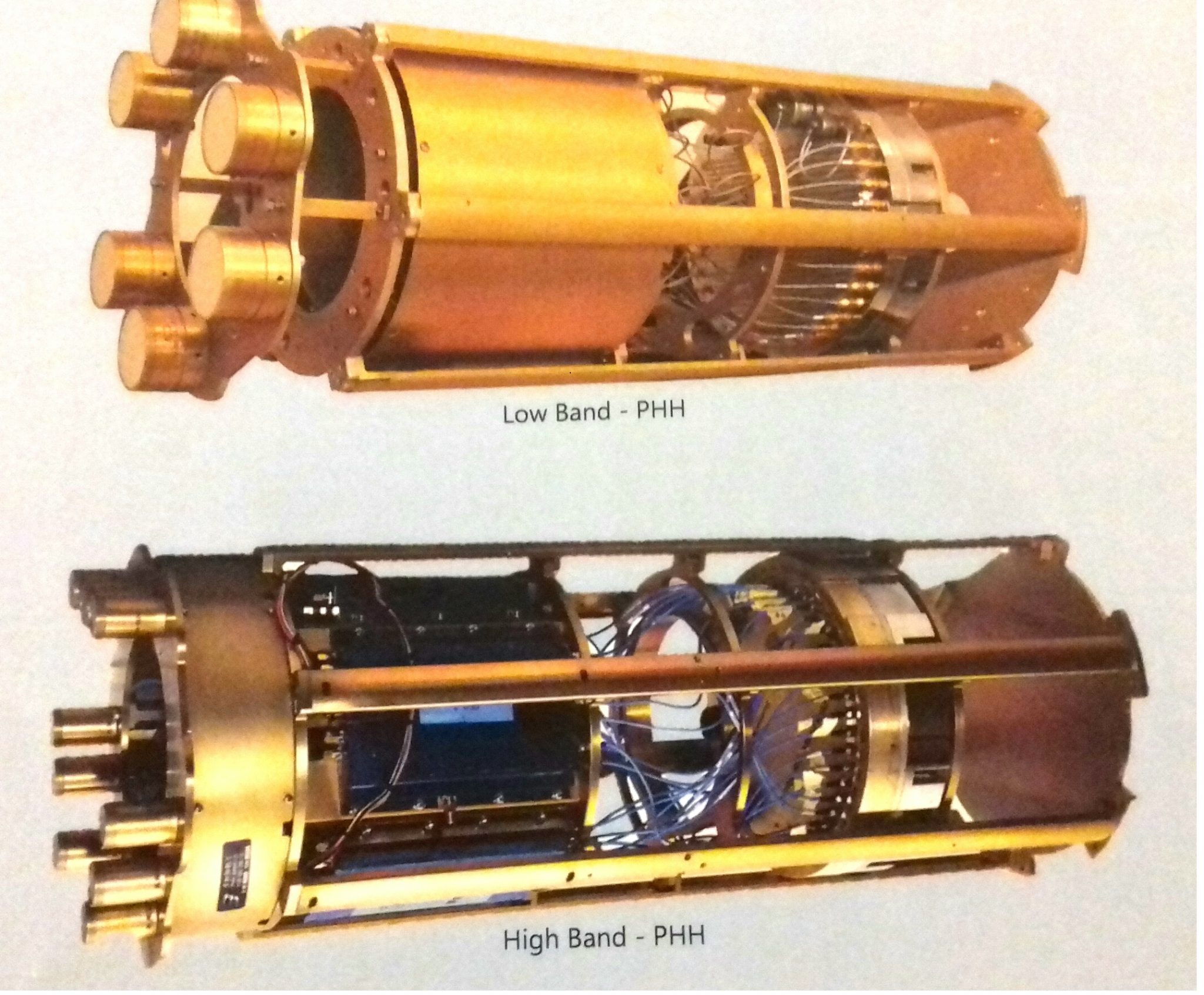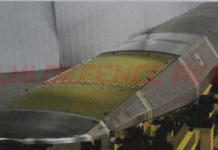With the Indian Air force (IAF) looking to seriously enhance its standoff strike capabilities, there is a newfound emphasis on the creation of air to surface missiles (ASMs) for varying roles by the Defence Research and Development Organization (DRDO). If we keep aside the air-launched version of the Indo-Russian Brahmos, the most advanced indigenous ASM in terms of development is the so called New Generation Anti-Radiation Missile (NGARM) being developed by DRDO’s Defence Research and Development Laboratory (DRDL), which is India’s oldest missile laboratory. As its name suggests, NGARM is meant to be used to engage enemy radar sites and communications nodes emitting at radio frequencies (RF) with precision. It would be worthwhile to take a brief look at this system which was showcased in a video released by the IAF on the occasion of its 85th anniversary in 2017.
Passive Homing
NGARM was sanctioned for development in 2012 at a cost of Rs 317.20 crores with a project completion date (PDC) of December 2017. However, that PDC has been extended according to DRDO sources and developmental trials are still underway. Like most other anti-radiation missiles (ARMs), NGARM’s primary guidance system is an on-board passive homing head (PHH) with broadband capability, which allows it to discriminate and lock on to a target of interest among a number of emitters available in its field-of-view (FoV).

Image 1: Location of the PHH on NGARM. Source: DLRL Brochure distributed at DefexpoIndia 2018
This 2-D PHH has been developed by DRDO’s Defence Electronics Research Laboratory (DLRL) and can detect RF emissions from up to a 100 km away. DLRL’s PHH, according to the brochure/flyer, operates in the D-J frequency band and has a wider FoV than legacy PHH’s used on imported systems. It also has a compact front-end owing to the use of monolithic microwave integrated circuit (MMIC) technology.

Image 2: Low Band and High Band elements of the PHH. Source: DLRL Brochure distributed at DefexpoIndia 2018
The PHH of course comes into play when the target is actually emitting. In legacy systems, a memory based autopilot using purely inertial guidance would typically keep the missile on an intercept trajectory towards the last known location of an emitter as detected by the PHH, once the target had stopped emitting. The actual success rate of such systems against relocatable emitters as well as those that were manned by well-trained crews maintaining strict discipline with respect to the duration of emission was very low. It was only with the advent of on-board inertial navigation systems (INSs) that could use updates from a global positioning system (GPS) to remove accumulated errors, that the success rate of ARMs showed significant improvement. NGARM, of course, has an on-board INS that can receive multi-constellation updates.
End-game
But what promises to make NGARM a truly contemporary system, is the fact that it could possibly be equipped with a millimeter wave (MMW) seeker in the future, which one could speculate operates in the W- band for the endgame. This would very much be in tune with Western trends towards the use of terminal guidance on ARMs to counter emitter shutdowns. MMW-based terminal guidance means that by simply shutting down their radars quickly or by changing position and/or using decoys, enemy operators do not ensure the survivability of their systems. A good MMW seeker head should be able to discriminate between decoys and actual targets and also locate emitters that have packed up and are on the move within an arc of a few km.
To make the fullest use of its terminal homing capability, NGARM is propelled by a dual-pulse solid rocket motor built by Premier Explosives Limited (PEL) under transfer of technology from DRDO’s High Energy Materials Research Laboratory (HEMRL), that allows it to strike targets between 15 to 100 kilometres (km) away and can be launched from a Su-30 MKI flying at altitudes of 0.1 to 15 km. The missile is capable of operating in both lock-on-before-launch (LOBL) and lock-on-after-launch (LOAL) modes.
The dual-pulse propulsion (DPP) scheme is an outgrowth of the work done by DRDO’s missile complex and Premier Electronics Limited (PEL) for the long range surface to air missile (LRSAM) project, which is the first system for which DRDO has fielded a DPP motor. For NGARM, a DPP motor will allow it to reduce the reaction time that enemy mobile radars will have once they have been targeted during the close-in stage. Indeed, the combination of MMW-based terminal guidance and the DPP scheme certainly holds the potential for NGARM to become a truly lethal system for enemy radars.

Representative Image: Dual Pulse Propulsion Scheme For the LRSAM. Source: HEMRL Brochure distributed at DefexpoIndia 2018
The imaging capability of its seeker will also help NGARM attack the most vulnerable parts of radar systems such as the antenna etc, by using the target’s characteristics available on the database of the missile’s on-board processor (OBP).The fact that NGARM uses a laser proximity fuze (LPF) for detonating its warhead (which is of pre-fragmented type and is specifically designed to attack key radar parts) is also indicative of a desire to fully exploit the imaging capability of its terminal guidance scheme to accurately target the most vulnerable parts of an enemy emitter.
Status
Some earlier reports suggesting that the IAF was concerned about the weight of NGARM as compared to imported systems and was therefore not too keen on it, have been proven to be unfounded. NGARM has successfully cleared both captive flight trials (CFTs) as well drop flight trials (DFTs) from Station 8 of an IAF Su-30 MKI whose AKU-58 launcher was modified to receive the NGARM. Here are clippings from those trials as shown on the IAF’s 85th Anniversary Video:

Source: IAF 85th Anniversary Video
The first lot of CFTs, held in May 2016, were done with the objective of ‘proving mechanical integration aspects of the missile to SU-30MkI for the carriage envelope conditions’, according to DRDO. DRDO also says that ‘The post flight data analysis has shown that all the structural design parameters were within the predicted bounds and based on the results, NGARM is cleared for carriage conditions at station 8 on Su-30MKI’. Moreover, the DFT conducted during December 2016, from Air Force Station Kalaikunda proved that NGARM could be safely released from Station 8 of an IAF Su-30 MKI. This DFT saw NGARM being released from a Su-30 MKI flying at an altitude of 6.5 km and a speed of 0.8 Mach. As on date, NGARM is also being qualified for carriage and subsequent separation release with Station numbers 5,6 and 7 on two Su-30 MKI being used for this purpose.
Though it is primarily meant for carriage by the IAF’s Su-30 MKI, the missile will also be compatible with the Mirage 2000 TI and Jaguar. As far as the missile itself is concerned, laboratory test trials with NGARM’s radome for selected frequencies have been completed and the static firing of its rocket motors at sea-level conditions has also been done. As such, NGARM is headed for powered flight trials later this year once all residual CFTs and DFTs are complete.
Saurav Jha is the Editor-in-Chief of Delhi Defence Review. Follow him on Twitter @SJha1618
© Delhi Defence Review. Reproducing this content in full without permission is prohibited.
































